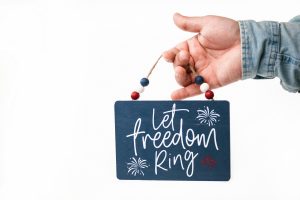Conflict Resolution Techniques for the Modern Office
In the modern workplace, conflict is inevitable. With different personalities, opinions, and work styles, disagreements are bound to happen. However, when conflict arises, it can greatly impact the productivity and morale of the employees. This is why conflict resolution techniques are crucial for a harmonious and efficient work environment. In this article, we will discuss some effective conflict resolution techniques for the modern office.
The Importance of Conflict Resolution in the Modern Office
Before diving into the techniques, let’s first understand why conflict resolution is vital in the modern office. In today’s fast-paced and constantly evolving work culture, employees are expected to work collaboratively in diverse teams. This diversity can lead to differences in opinions, ideas, and ways of working. If conflicts are not resolved in a timely and effective manner, it can lead to a toxic work environment, high turnover rates, and reduced productivity.
Active Listening
One of the fundamental conflict resolution techniques is active listening. Often, when a conflict arises, people tend to focus on getting their point across without truly listening to the other person. This can escalate the conflict further. Active listening involves giving undivided attention to the other person, acknowledging their perspective, and paraphrasing their points to ensure mutual understanding.
TIP: Use “I” Statements
When communicating your thoughts and concerns, it is essential to use “I” statements instead of “you” statements. For instance, saying “I feel that my ideas are not being considered” instead of “You never listen to my ideas” can make a significant difference in de-escalating the conflict. Using “I” statements expresses your feelings without attacking the other person.
Collaboration
Instead of viewing conflict as a win-lose situation, try to approach it with a collaborative mindset. Encourage all parties involved to work together to find a solution that satisfies everyone’s needs. This helps in creating a sense of unity and mutual respect among employees. Collaboration also promotes creativity and innovation, which can lead to better outcomes.
TIP: Set Ground Rules
During the collaboration process, it is crucial to establish ground rules to ensure that the discussions remain respectful and productive. Ground rules could include actively listening to each other, avoiding personal attacks, and using positive language. When everyone follows these rules, it creates a safe space for open and healthy communication.
Mediation
When conflicts become too complex to handle on their own, seeking the help of a mediator can be beneficial. A mediator is an unbiased third party who facilitates the conversation between conflicting parties, helping them find a resolution. Mediation not only resolves conflicts but also improves relationships and promotes a positive work environment.
TIP: Choose a Neutral Mediator
It is essential to choose a mediator who is neutral and unbiased. This ensures that all parties involved feel heard and that the mediator is not taking sides. Also, ensure that the mediator is trained in conflict resolution techniques to effectively guide the conversation towards a resolution.
Embrace Differences
In a diverse workplace, conflicts can often arise due to differences in opinions and perspectives. Instead of viewing these differences as a hurdle, see them as an opportunity to learn and grow. Embrace the unique strengths and ideas that each individual brings to the table. This promotes a culture of inclusion and fosters a positive work environment.
TIP: Encourage Team Building Activities
Team building activities are a great way to bring employees together and foster a sense of camaraderie. These activities can range from informal group lunches to organized team-building workshops. By spending time together outside of work, employees can get to know each other better and build strong relationships, reducing the chances of conflicts arising in the future.
In Conclusion
In today’s fast-paced and diverse work environment, it is essential to have effective conflict resolution techniques in place. By actively listening, collaborating, seeking mediation when needed, and embracing differences, conflicts can be resolved in a healthy and productive manner. Remember to always prioritize open communication, respect, and understanding to maintain a positive work environment for everyone.










